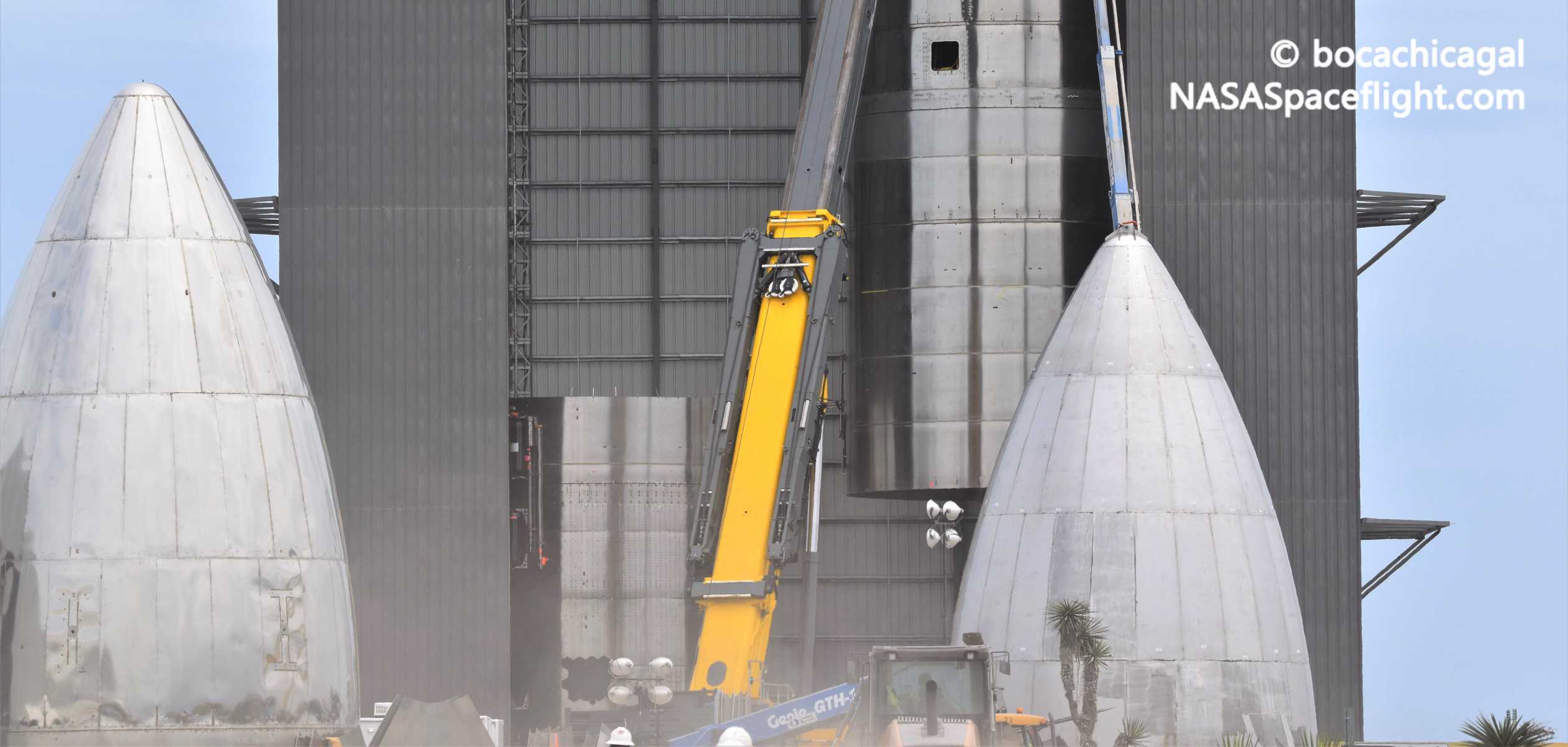

News
SpaceX is about to have a fleet of Starship rockets
SpaceX has finished the last major stacking event for the business half of its fifth full-scale Starship prototype, meaning that the company may be a week or less from having a fleet of Starships for the first time ever.
As of now, Starship serial number 5 (SN5) is on track to be completed in under a month, continuing a trend that SpaceX has managed over the entirety of 2020. Beginning in mid-January, SpaceX has completed several nosecone pathfinders, three test tanks, and three full-scale Starship prototypes – soon to be four once SN5 is finished. Once it is, however, SpaceX will be entering a new era of operations – fleet operations.
Up to this point, every full-scale Starship prototype and test tank SpaceX has built – excluding the tank SN2 was turned into in March – has been quickly destroyed over the course of one or two tests. For better or for worse, this has meant that SpaceX’s test and launch pad has always been more or less self-clearing, making way for the next prototype to roll out and begin testing after the scraps of its predecessor were removed. This time around, barring Starship SN4’s imminent demise, SpaceX will now have to deal with multiple completed Starship prototypes at the same time – a tiny taste of things to come.
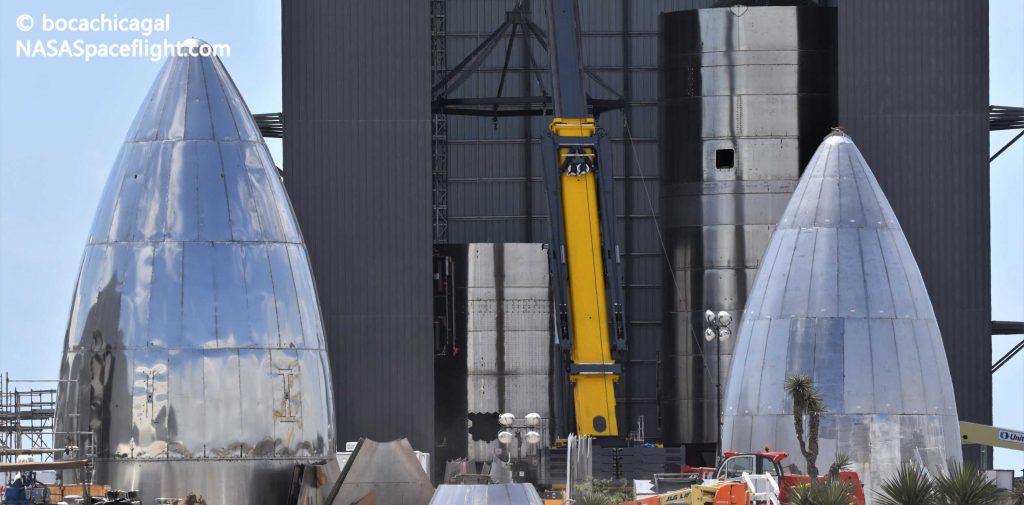
For unknown reasons, SpaceX decided to swap out Starship SN4’s lone Raptor engine (likely SN18) after multiple wet dress rehearsals, partial engine tests, and two static fire tests – at least one of which was confirmed a success by CEO Elon Musk. Most recently, SpaceX removed Raptor SN18 to perform a more ambitious cryogenic pressure test, pushing Starship SN4’s propellant tanks all the way to 7.5 bar (~110 psi) at the same time as hydraulic rams simulated the thrust of three Raptor engines at the rocket’s base.
Instead of reinstalling Raptor SN18, SpaceX transported Raptor SN20 to the launch pad and installed it on Starship SN4 on May 10th, less than 24 hours after the prototype passed an orbital-class pressure test.
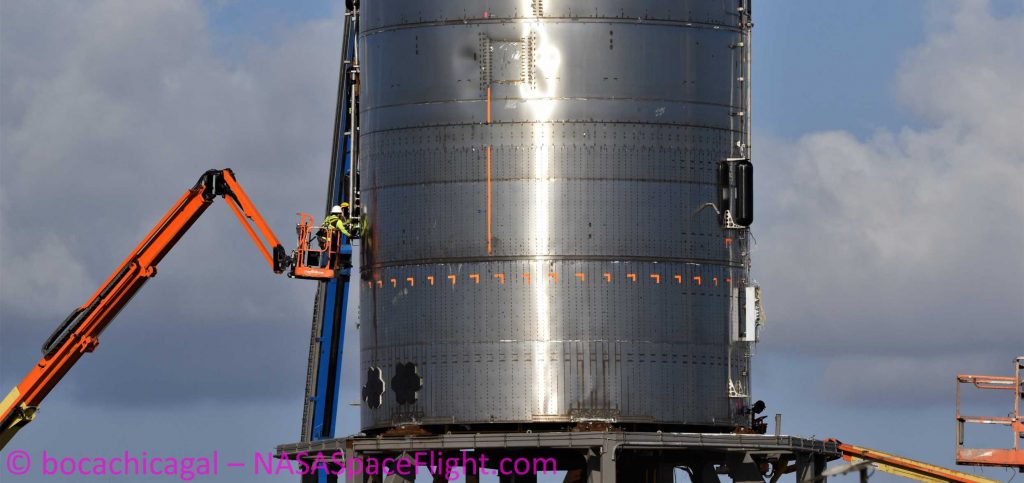
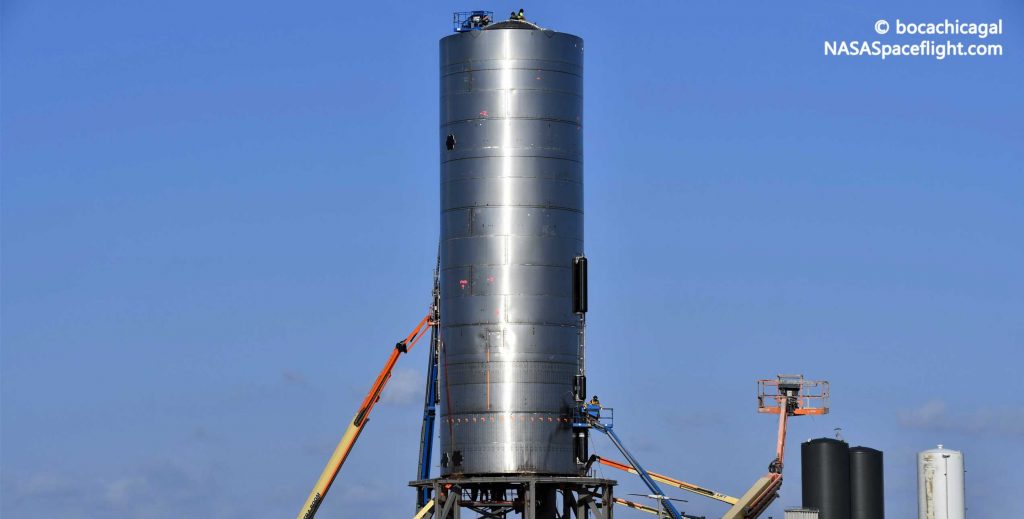
Aside from installing Raptor SN20, SpaceX teams have spent the last few days adding new COPVs (composite overwrapped pressure vessels) and plumbing to Starship SN4’s exterior – purpose largely unknown. While the new hardware is mostly a mystery, it is known that SpaceX is in the process of preparing SN4 and its new Raptor engine for a third wet dress rehearsal (WDR) and static fire test, necessary to ensure that Raptor SN20 is properly installed and functioning as expected.
Assuming that third static fire is successful, SpaceX’s will prepare Starship SN4 for its first flight, a ~150m (500 ft) hop test that will also be the first intentional flight of any full-scale Starship prototype since the program’s birth. For that hop test, SN4 will need some kind of attitude control system (ACS) thrusters to control its rotation and provide fine trajectory tuning to assist the ship’s lone Raptor engine. This is the likeliest explanation for the new hardware being installed on Starship SN4, as the ship does not currently appear to have ACS thrusters installed.
Starship Troopers
Of course, the first flight of a full-scale Starship prototype will probably be the riskiest test yet for the program and there’s a good chance that SN4 will meet its demise at some point during that flight. Enter Starship SN5.
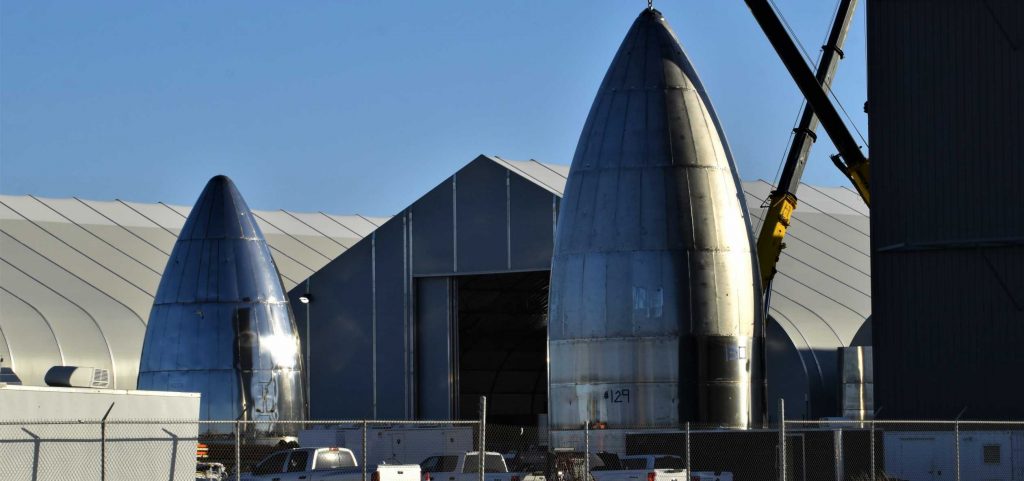
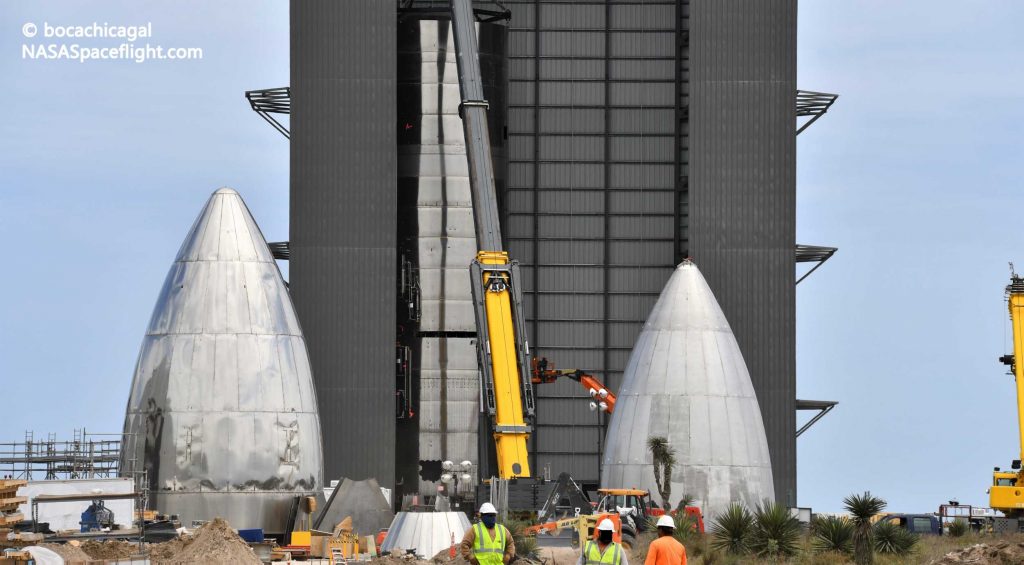
As of May 12th, Starship SN5’s final two tank sections were stacked, effectively completing the most important half of the rocket (minus one final circumferential ring weld). SN5’s final outfitting of avionics and plumbing is still pending and will take at least a few days to a week or more, but that work can and has been completed after prototypes are transferred by road to the launch pad. Currently, Starship SN4 is occupying SpaceX’s one and only pad test stand, however, meaning that it wouldn’t make much sense to immediately move SN5 to the launch pad – at least until SN4 is done testing.
SN5 will also need a nose section and, perhaps, flaps installed, meaning that the full ship is likely still at least a week or two away from being finished, but that likely wont stop SpaceX from proof testing the rocket’s tanks if or when SN4 makes space at the launch pad.
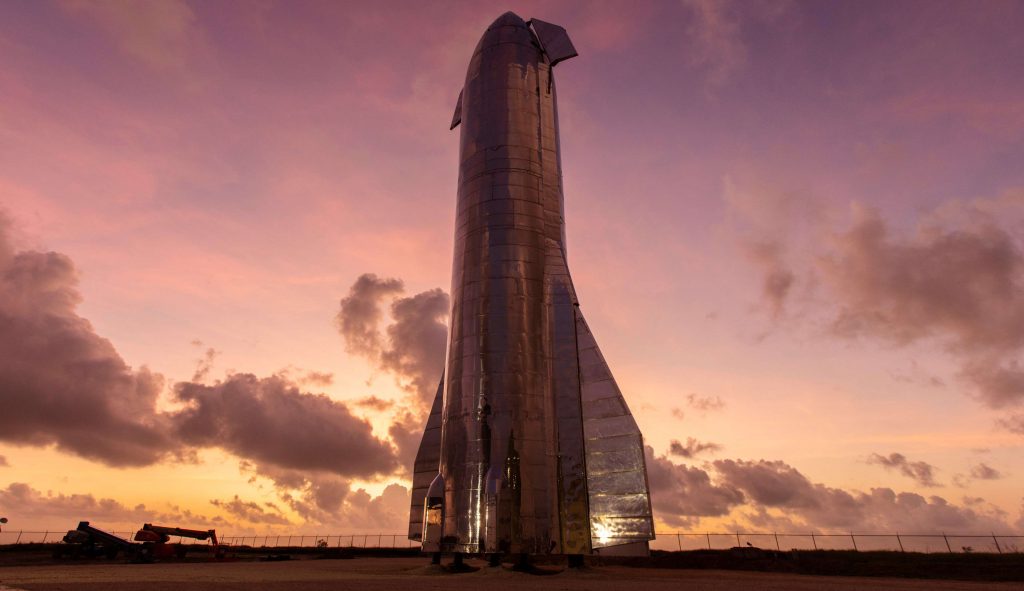
According to comments made by Elon Musk, SN5 will likely become the first Starship prototype to have three Raptor engines installed and the first to attempt a truly high-altitude flight test if Starship SN4 is met with success in the coming weeks. As absurd as it feels to say, if SN5 completes triple-Raptor testing and a 20 km (~12 mi) flight test without issue, Musk has stated that the next step would be orbital flight tests. Starship SN6’s steel rings, meanwhile, are already being formed and stacked as SN5 nears completion.
Elon Musk
Tesla begins expanding Robotaxi access: here’s how you can ride
You can ride in a Tesla Robotaxi by heading to its website and filling out the interest form. The company is hand-picking some of those who have done this to gain access to the fleet.

Tesla has begun expanding Robotaxi access beyond the initial small group it offered rides to in late June, as it launched the driverless platform in Austin, Texas.
The small group of people enjoying the Robotaxi ride-hailing service is now growing, as several Austin-area residents are receiving invitations to test out the platform for themselves.
The first rides took place on June 22, and despite a very small number of very manageable and expected hiccups, Tesla Robotaxi was widely successful with its launch.
Tesla Robotaxi riders tout ‘smooth’ experience in first reviews of driverless service launch
However, Tesla is expanding the availability of the ride-hailing service to those living in Austin and its surrounding areas, hoping to gather more data and provide access to those who will utilize it on a daily basis.
Many of the people Tesla initially invited, including us, are not local to the Austin area.
There are a handful of people who are, but Tesla was evidently looking for more stable data collection, as many of those early invitees headed back to where they live.
The first handful of invitations in the second round of the Robotaxi platform’s Early Access Program are heading out to Austin locals:
I just got a @robotaxi invite! Super excited to go try the service out! pic.twitter.com/n9mN35KKFU
— Ethan McKanna (@ethanmckanna) July 1, 2025
Tesla likely saw an influx of data during the first week, as many traveled far and wide to say they were among the first to test the Robotaxi platform.
Now that the first week and a half of testing is over, Tesla is expanding invites to others. Many of those who have been chosen to gain access to the Robotaxi app and the ride-hailing service state that they simply filled out the interest form on the Robotaxi page of Tesla’s website.
That’s the easiest way you will also gain access, so be sure to fill out that form if you have any interest in riding in Robotaxi.
Tesla will continue to utilize data accumulated from these rides to enable more progress, and eventually, it will lead to even more people being able to hail rides from the driverless platform.
With more success, Tesla will start to phase out some of the Safety Monitors and Supervisors it is using to ensure things run smoothly. CEO Elon Musk said Tesla could start increasing the number of Robotaxis to monitors within the next couple of months.
Elon Musk
Tesla analyst issues stern warning to investors: forget Trump-Musk feud

A Tesla analyst today said that investors should not lose sight of what is truly important in the grand scheme of being a shareholder, and that any near-term drama between CEO Elon Musk and U.S. President Donald Trump should not outshine the progress made by the company.
Gene Munster of Deepwater Management said that Tesla’s progress in autonomy is a much larger influence and a significantly bigger part of the company’s story than any disagreement between political policies.
Munster appeared on CNBC‘s “Closing Bell” yesterday to reiterate this point:
“One thing that is critical for Tesla investors to remember is that what’s going on with the business, with autonomy, the progress that they’re making, albeit early, is much bigger than any feud that is going to happen week-to-week between the President and Elon. So, I understand the reaction, but ultimately, I think that cooler heads will prevail. If they don’t, autonomy is still coming, one way or the other.”
BREAKING: GENE MUNSTER SAYS — $TSLA AUTONOMY IS “MUCH BIGGER” THAN ANY FEUD 👀
He says robotaxis are coming regardless ! pic.twitter.com/ytpPcwUTFy
— TheSonOfWalkley (@TheSonOfWalkley) July 2, 2025
This is a point that other analysts like Dan Ives of Wedbush and Cathie Wood of ARK Invest also made yesterday.
On two occasions over the past month, Musk and President Trump have gotten involved in a very public disagreement over the “Big Beautiful Bill,” which officially passed through the Senate yesterday and is making its way to the House of Representatives.
Musk is upset with the spending in the bill, while President Trump continues to reiterate that the Tesla CEO is only frustrated with the removal of an “EV mandate,” which does not exist federally, nor is it something Musk has expressed any frustration with.
In fact, Musk has pushed back against keeping federal subsidies for EVs, as long as gas and oil subsidies are also removed.
Nevertheless, Ives and Wood both said yesterday that they believe the political hardship between Musk and President Trump will pass because both realize the world is a better place with them on the same team.
Munster’s perspective is that, even though Musk’s feud with President Trump could apply near-term pressure to the stock, the company’s progress in autonomy is an indication that, in the long term, Tesla is set up to succeed.
Tesla launched its Robotaxi platform in Austin on June 22 and is expanding access to more members of the public. Austin residents are now reporting that they have been invited to join the program.
Elon Musk
Tesla surges following better-than-expected delivery report
Tesla saw some positive momentum during trading hours as it reported its deliveries for Q2.

Tesla (NASDAQ: TSLA) surged over four percent on Wednesday morning after the company reported better-than-expected deliveries. It was nearly right on consensus estimations, as Wall Street predicted the company would deliver 385,000 cars in Q2.
Tesla reported that it delivered 384,122 vehicles in Q2. Many, including those inside the Tesla community, were anticipating deliveries in the 340,000 to 360,000 range, while Wall Street seemed to get it just right.
Tesla delivers 384,000 vehicles in Q2 2025, deploys 9.6 GWh in energy storage
Despite Tesla meeting consensus estimations, there were real concerns about what the company would report for Q2.
There were reportedly brief pauses in production at Gigafactory Texas during the quarter and the ramp of the new Model Y configuration across the globe were expected to provide headwinds for the EV maker during the quarter.
At noon on the East Coast, Tesla shares were up about 4.5 percent.
It is expected that Tesla will likely equal the number of deliveries it completed in both of the past two years.
It has hovered at the 1.8 million mark since 2023, and it seems it is right on pace to match that once again. Early last year, Tesla said that annual growth would be “notably lower” than expected due to its development of a new vehicle platform, which will enable more affordable models to be offered to the public.
These cars are expected to be unveiled at some point this year, as Tesla said they were “on track” to be produced in the first half of the year. Tesla has yet to unveil these vehicle designs to the public.
Dan Ives of Wedbush said in a note to investors this morning that the company’s rebound in China in June reflects good things to come, especially given the Model Y and its ramp across the world.
He also said that Musk’s commitment to the company and return from politics played a major role in the company’s performance in Q2:
“If Musk continues to lead and remain in the driver’s seat, we believe Tesla is on a path to an accelerated growth path over the coming years with deliveries expected to ramp in the back-half of 2025 following the Model Y refresh cycle.”
Ives maintained his $500 price target and the ‘Outperform’ rating he held on the stock:
“Tesla’s future is in many ways the brightest it’s ever been in our view given autonomous, FSD, robotics, and many other technology innovations now on the horizon with 90% of the valuation being driven by autonomous and robotics over the coming years but Musk needs to focus on driving Tesla and not putting his political views first. We maintain our OUTPERFORM and $500 PT.”
Moving forward, investors will look to see some gradual growth over the next few quarters. At worst, Tesla should look to match 2023 and 2024 full-year delivery figures, which could be beaten if the automaker can offer those affordable models by the end of the year.
-

 Elon Musk2 days ago
Elon Musk2 days agoTesla investors will be shocked by Jim Cramer’s latest assessment
-

 News1 week ago
News1 week agoTesla Robotaxi’s biggest challenge seems to be this one thing
-

 Elon Musk2 weeks ago
Elon Musk2 weeks agoElon Musk slams Bloomberg’s shocking xAI cash burn claims
-

 News2 weeks ago
News2 weeks agoTexas lawmakers urge Tesla to delay Austin robotaxi launch to September
-

 Elon Musk1 week ago
Elon Musk1 week agoFirst Look at Tesla’s Robotaxi App: features, design, and more
-

 Elon Musk2 weeks ago
Elon Musk2 weeks agoTesla Robotaxis are becoming a common sight on Austin’s public roads
-

 Elon Musk2 weeks ago
Elon Musk2 weeks agoxAI’s Grok 3 partners with Oracle Cloud for corporate AI innovation
-

 Elon Musk2 weeks ago
Elon Musk2 weeks agoSpaceX President meets India Minister after Starlink approval

















